K&L Trainz is proud to welcome the C&O L1 Streamlined Hudson and matching “Chessie” consist to the roster!
C&O L1 Streamlined Hudson set includes: (1) Engine & Tender, (1) Baggage/Coach, (3) Coaches, (1) Diner, (1) Dome, & (1) Observation
Buy nowTrainz Steam Locomotives
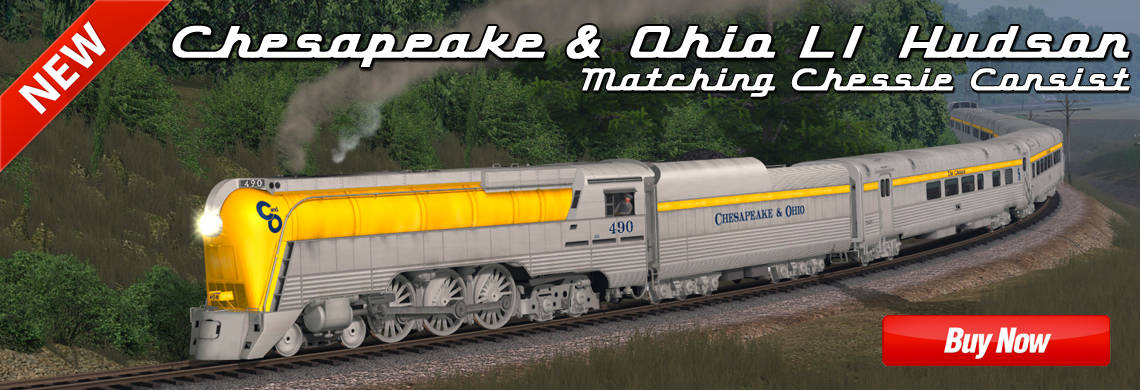
by Steve Lerro
K&L Trainz is proud to welcome the C&O L1 Streamlined Hudson and matching “Chessie” consist to the roster!
C&O L1 Streamlined Hudson set includes: (1) Engine & Tender, (1) Baggage/Coach, (3) Coaches, (1) Diner, (1) Dome, & (1) Observation
Buy now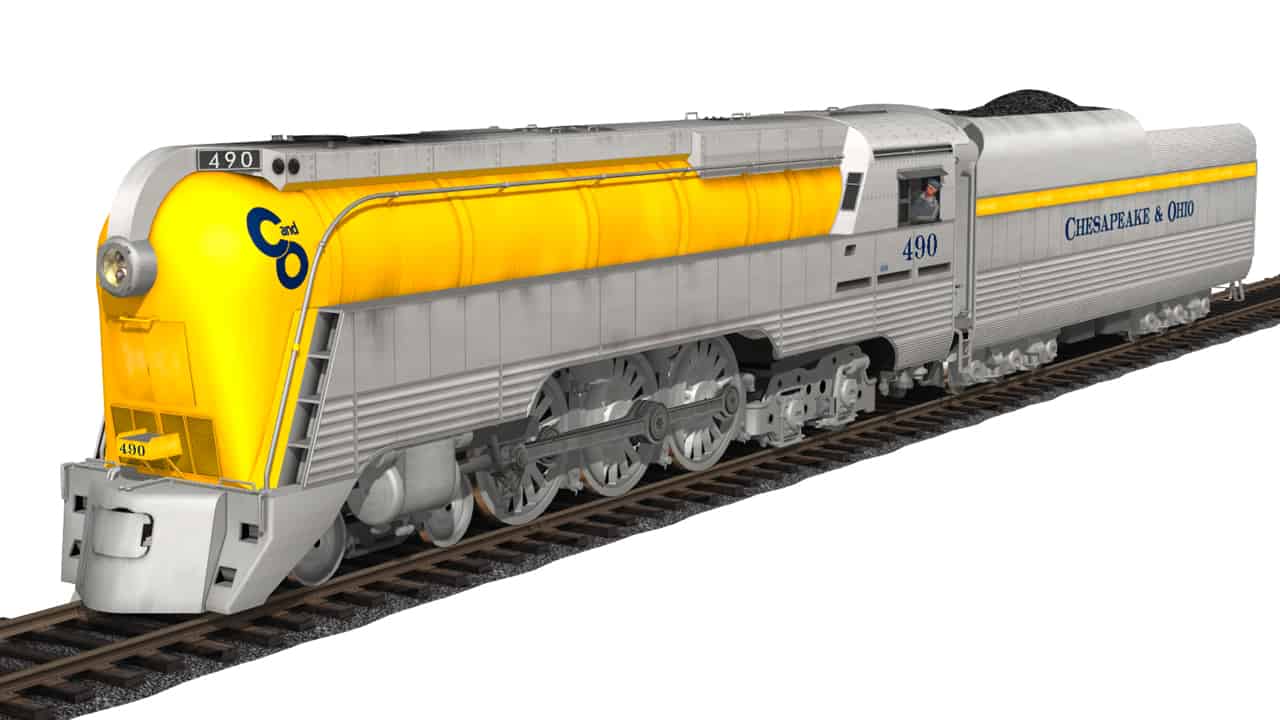
by
An order of (5) F-19 4-6-2 pacifics were constructed by Alco in 1926 for the Chesapeake & Ohio. Shortly after the end of WWII, the C&O decided to upgrade their passenger service. The C&O was primarily a coal-hauler and therefore wanted to improve steam locomotive technology. They developed a new luxury liner between Washington and Cincinnati named the “Chessie.” The new liner was to be powered by experimental steam-turbine-electric locomotives. In addition, the C&O’s Huntington shops rebuilt the F-19 4-6-2’s into 4-6-4 L1 Hudsons. The new locomotives had roller bearings, front-end throttle, high-speed booster, cross counterbalance, and Franklin Type A Poppet Valves.
A 210psi boiler pressure, (6) 74″ drivers and 49200 lbs of tractive effort made the L1 Hudsons a very worthy locomotive for the Chessie lash up.
Due to the increased automobile production and the airline expansion that occurred after the war, the luxury Chessie passenger trains never ran. The train was essentially cancelled and many of the cars were sold off before being delivered. The rebuilt “Hudsons” instead hauled regular passenger trains until 1953.
#490 was stored in the Huntington Roundhouse until 1968 when it was moved to the Baltimore & Ohio Railroad Museum. She is the sole surviving C&O L1 Streamlined Hudson.
C&O L1 Streamlined Hudson set includes: (1) Engine & Tender, (1) Baggage/Coach, (3) Coaches, (1) Diner, (1) Dome, & (1) Observation
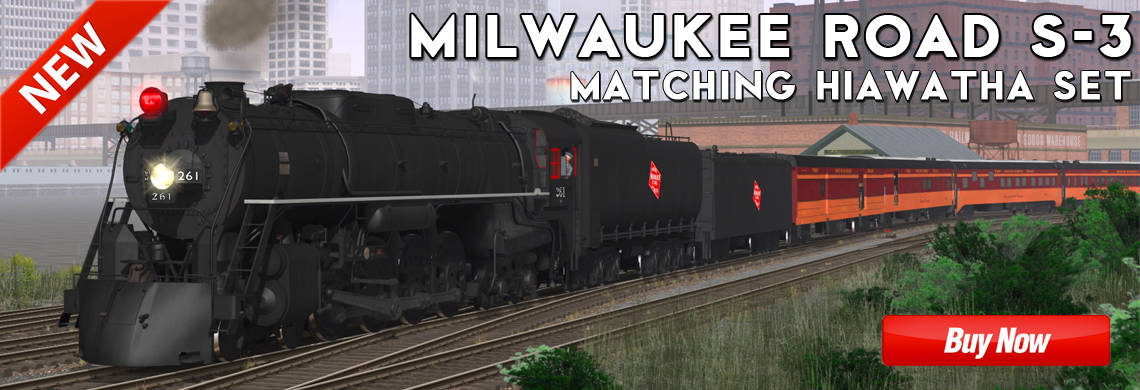
by Steve Lerro
K&L Trainz is proud to welcome Milwaukee Road 261 to roster!
MILW 261 set includes: (4) Engines, (3) Tenders, (1) Aux Tender, (1) Tool Car, (10) Passenger Cars
Buy now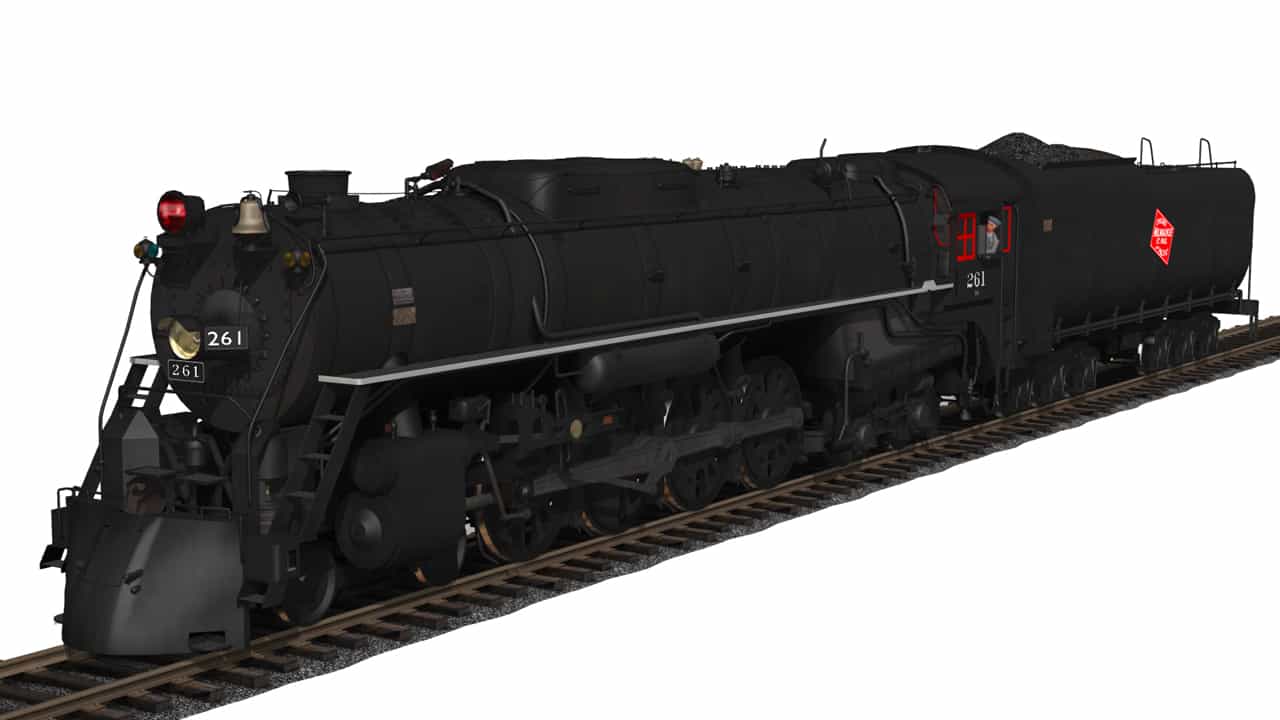
by
In July 1944, the Milwaukee Road took an order of (10) 4-8-4 Northerns from the American Locomotive Company. Numbered 260-269, they were designated the S-3 class, and were used for heavy mainline freights and occasionally subbing on crack passenger trains. Far from being the heaviest or fastest 4-8-4’s, they were certainly of the most modernized. Weighing in at 460,000 lbs, they produced 4500 hp and had a maximum speed of 100mph. They sat on (8) 74″ boxpox drive wheels. They sported a few unusual features as well. An all weather enclosed cab due to the sub-zero winter temperatures, a combination sand and steam dome, an red oscillating Mars Light, a massive cast steal pilot with folding coupler, and probably the most unusual, an air horn. Unlike the Milwaukee Road’s Streamlined A class 4-4-2 Atlantics used in Hiawatha Service, the S-3 4-8-4’s were also equipped with 3 chime steam whistles. The S-3’s had a very short career, only 10 years. When the Milwaukee Road did away with steam locomotives in 1954, (8) of the 10 4-8-4’s were scrapped.
#261 was donated to the National Railroad Museum in Green Bay Wisconsin in 1958. She sat on display for just over 20 years when “North Star Rail” leased #261 and moved her to Minneapolis for a full restoration. She was fired up in 1993 and has been running ever since. 261 was purchased from the museum in May, 2010 for $225,000. She is now property of “The Friends of the 261.”
#265 is on display at the Illinois Railway Museum in Union, IL.
MILW S-3 Northern set includes:
MILW S-3 Engine V-1 (3 chime whistle, secondary airhorn, white number plate)
MILW S-3 Engine V-2 (6 chime whistle, secondary airhorn)
MILW S-3 Engine V-3 (6 chime whistle, secondary 3 chime whistle)
MILW S-3 Aux Tender
MILW S-3 – Tool Car “Earling”
MILW 01 – Baggage “Golden Valley“
MILW 02 – Baggage “2450”
MILW 03 – Dorm “Grand Canyon”
MILW 04 – Coach “Wenonah”
MILW 05 – Coach “Nokomis”
MILW 06 – Sleeper “Minnesota River”
MILW 07 – Diner “Wisconsin Valley”
MILW 08 – Dome “Super Dome”
MILW 09 – Skytop “Cedar Rapids”
MILW 10 – Observation “Milwaukee”
Lackawanna 1661 – Engine & Tender
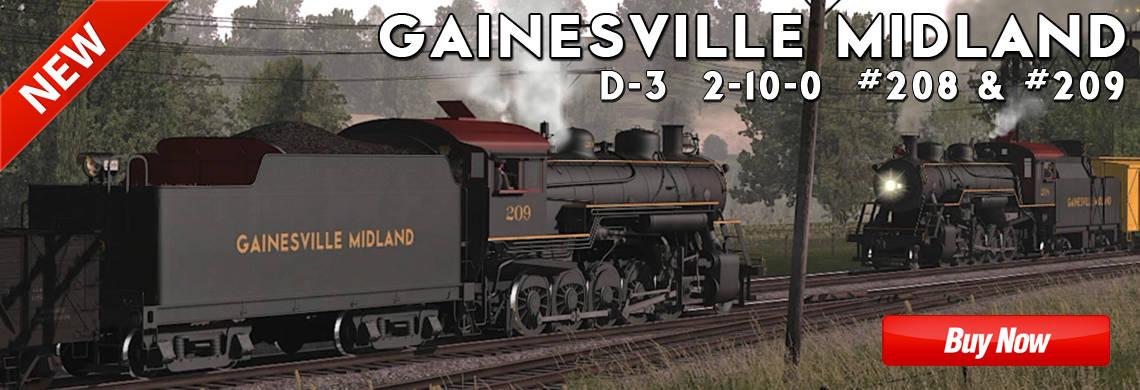
by Steve Lerro
K&L Trainz is proud to welcome: Gainesville Midland 2-10-0 Decapods #208 and #209 to the roster!
GM 2-10-0 208 & 209 set includes: (2) 208 Engines and a Tender, (2) 209 Engines and a Tender, as well as (2) Cabooses
Buy now
by
2-10-0 decapods #530 and #533 were originally built for the Seaboard Air Line in 1930. They were classified as D-3, have 56″ drivers, and produce 46,510 lbs of tractive effort. Both engines were sold to the Gainesville Midland railroad in 1952, becoming #208 and #209. Both were retired in 1959.
#208 was donated to the City of Winder, GA and was placed on display at the old Union Depot.
#209 was donated to the City of Gainesville, GA and was placed on display at the 209 Park on W. Academy St.
GM 2-10-0 208 & 209 set includes: (2) 208 Engines and a Tender, (2) 209 Engines and a Tender, as well as (2) Cabooses
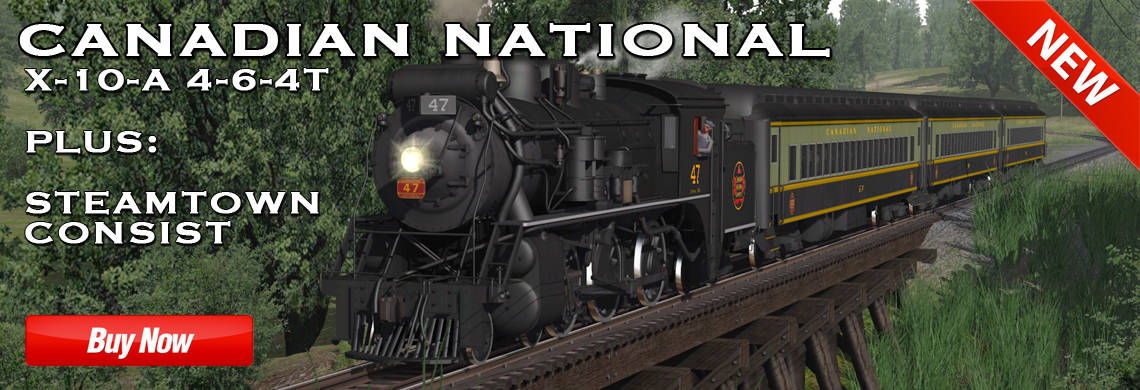
by Steve Lerro
K&L Trainz is proud to present the Canadian National X-10-a 4-6-4T!
CN/Steamtown X-10-a 4-6-4T set includes: (3) Engines, (1) Combine & (2) Coaches
Buy now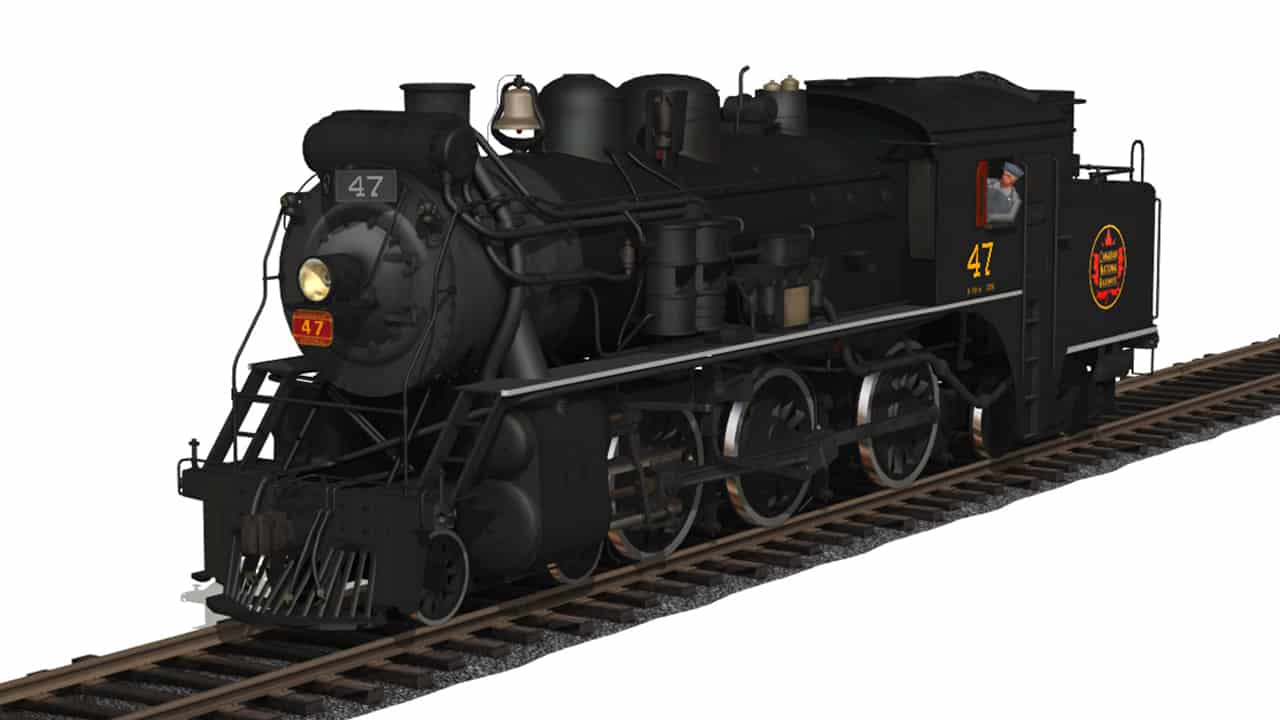
by
Built in 1914 by the Montreal Locomotive Works, the Grand Trunk Railway took order of (6) large 4-6-0 ten wheelers with a built in (4) wheel tender attached, making it a 4-6-4 tank engine. Classified as the K2, these locomotives were used for fast commuter service in the surrounding Montreal area. They were numbered #45-50, with (6) 63″ drivers, a higher 210 psi boiler pressure, and a shorter 50ft length, these engines were ideal for quick acceleration and navigation through the tight clearances in the city limits. In 1923, the Grand Trunk Railway became the Canadian National, and the K-2 class became the X-10-a. They saw usage on commuter service until 1961.
#46 is currently under restoration by the Ferrovary Museum of Beauce in Valley Junction, Quebec, Canada.
#47 was sold to F. Nelson Blount for use with his newly formed Steamtown operation out of North Walpole, New Hampshire. She had receive a fresh overhaul in 1958, so she was found to be in excellent condition and was subsequently fired up in 1961. Unfortunately, after only 5 weeks, it was discovered that her boiler was a full year overdate for teardown, which the Interstate Commerce Commission would not allow an extension for continued operation. #47 was placed back into retirement until a full boiler inspection could be made. After Steamtown’s demise in New Hampshire, she was transported to Bellows Falls, Vermont with the rest of the collection. She was then transported to the new Steamtown National Historic Site in Scranton, Pennsylvania, where she resides today as a static display.
#49 is currently on display at ExpoRail in Saint-Constant, Quebec, Canada.
CN/Steamtown X-10-a 4-6-4T set includes: (3) Engines, (1) Combine & (2) Coaches

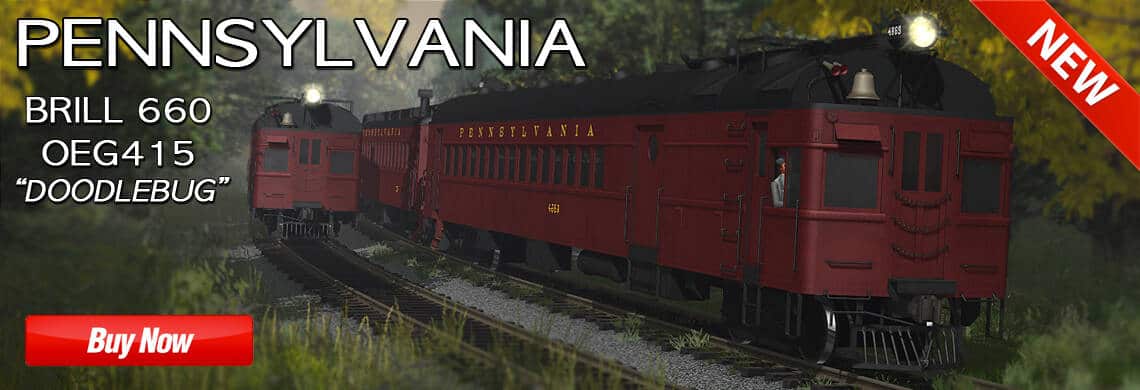
by Steve Lerro
K&L Trainz is proud to present it’s first diesel to the roster: PRR OEG415 Doodlebug!
PRR OEG415 Doodlebug set includes: (1) Motor Car & (2) PRR P54 Trailer Cars
Cab Interior: <kuid2:523:55555:1> MN ACMU Interior – Available for download from the Download Station (DLS)
https://www.auran.com/DLS/DLS_viewasset.php?AssetID=376032

by
Branch line passenger service had become a serious financial problem for all railroads in the early 1900’s, and the Pennsy was no exception. Long before automobile and motor buses, the PRR began experimenting with self-propelled equipement which could operate without a separate locomotive and without a full crew. After nearly 20 years of experimenting with various trolley look-alikes, the PRR finally turned it’s attention to the gasoline railcar. In 1930, a series of (5) cars were delivered by Brill, #4666-#4670. These were classified as GEG415: Gasoline Engine, Electric drive, G.E. Motors at 415 hp. They stretched 75′ in length, stood 14′ 2″ in height, and weighed in at 139,000 lbs. They had a combination of seating for 62 and a baggage/cargo area. They acquired the nickname: “Doodlebug.”
In the early 1940s, the PRR began upgrading the Doodlebugs with diesel engines. Why? One word…..fire! On July 31, 1940, an earlier Doodlebug from 1928, #4648, was involved in a head-on collision with a steam locomotive in Cuyahoga Falls, OH. The majority of the 43 casualties were burned to death when #4648’s massive gas tank was ruptured, then exploded. By 1942, all (5) of the GEG415’s were refitted with Hamilton 425 hp diesel engines. They were reclassified as OEG415: Oil (Diesel) Engine, Electric Drive, G.E. Motors. Since they replaced steam trains on many branch lines, it became necessary to tow extra passenger cars. They were just powerful enough to move themselves, as well as a maximum of (2) additional trailer cars. As built, these cars were rated at 60mph running singly, 50mph with (1) trailer, and 46mph with (2) trailers. Assignments of the Doodlebugs were spread throughout the system. They could be found on the branches radiating from Camden, Clayton, Baltimore, York, Pittsburgh, Wheeling, Alliance, Indianapolis, Logansport and Grand Rapids.
The Doodlebugs were often found towing PRR P54 coaches. These P54’s were lightweight, and were readily available since most major routes utilized the larger P70 coaches. A number of steam heated P54’s were fitted with coal stoves to provide heat since the Doodlebugs were incapable of providing steam heat. These were known as P54 Trailer Cars.
By the early 1960’s, all of the Doodlebugs were retired.
#4666 was sold to a number of tourist railroads:
• New Hope & Ivyland Railroad in New Hope, PA – 1970
• Black River & Western Railroad in Ringos, NJ – 1975
• Allentown & Auburn Railroad in Kutztown, PA – 2016
#4668 was sold and stored at the Illinois Railroad Museum in Union, IL., and was later sold to Clint Jones.
PRR OEG415 Doodlebug set includes: (1) Motor Car & (2) PRR P54 Trailer Cars
Cab Interior: <kuid2:523:55555:1> MN ACMU Interior – Available for download from the Download Station (DLS)
https://www.auran.com/DLS/DLS_viewasset.php?AssetID=376032
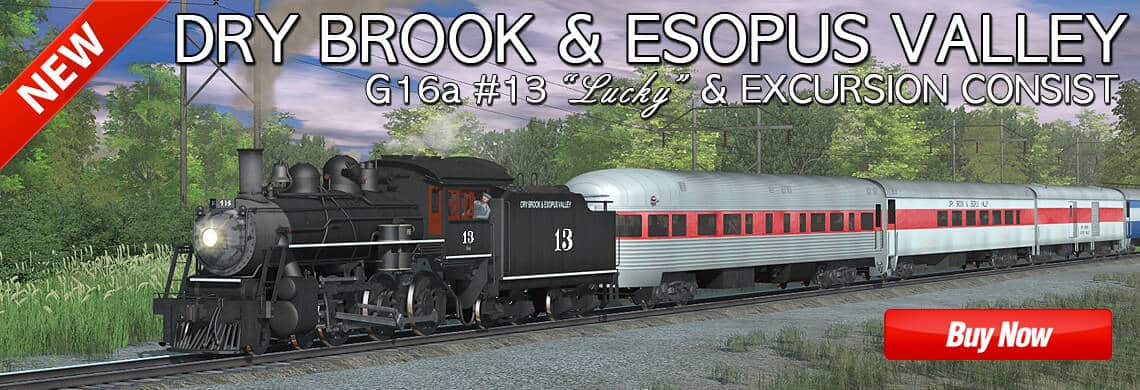
by Steve Lerro
DB&EV 13 set includes: (2) Locomotives, (2) Tenders, (1) Power Car, (1) Coach, (1) Diner, (1) Observation car and (2) Private Observation cars
Buy now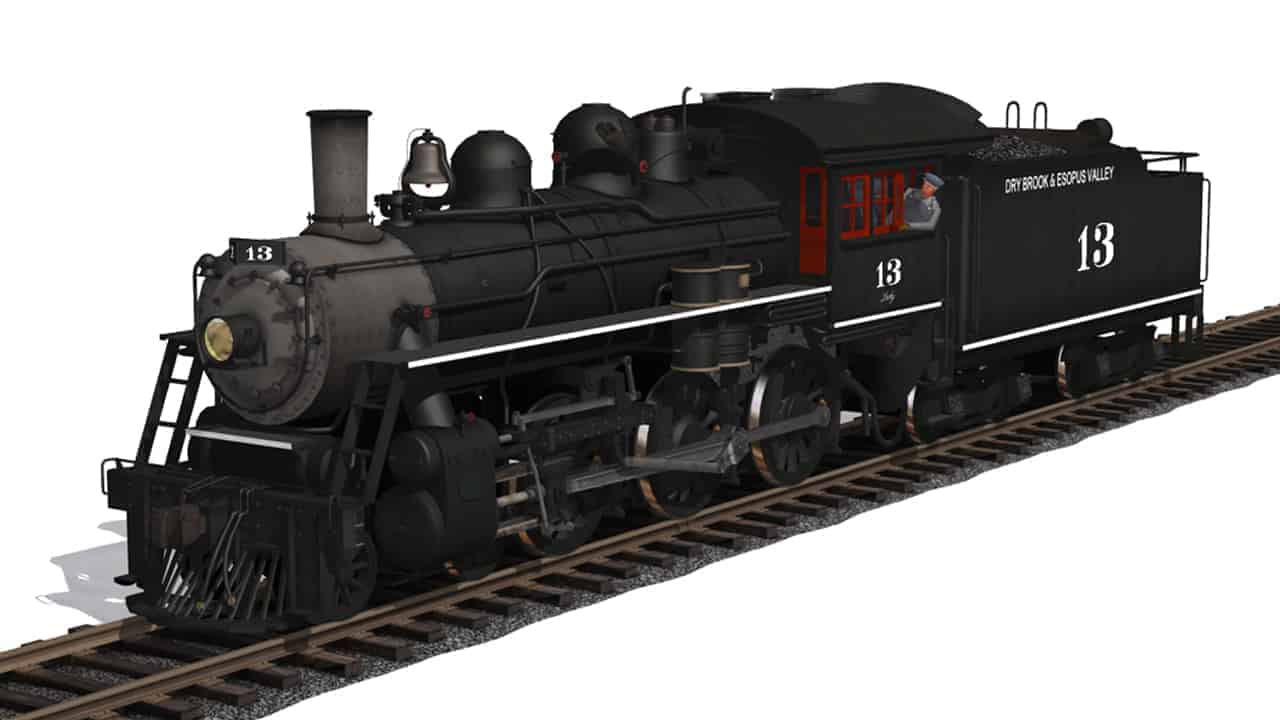
by
Canadian National 4-6-0 G-16-a #1129 was originally built in 1912 by the Montreal Locomotive Works for the Canadian Northern Railway. She spent her entire life working branch lines and shorter mixed freights across the CN system. When retired in 1959, she was placed on display in a park in St. John, New Brunswick in eastern Canada. After major flooding in 1975, #1129 was moved to Montpelier, Vermont for display with various other railroad equipement. There she underwent a major cosmetic restoration. Work had even begun to restore the engine to operating condition, but in December of 1990, it was determined that the grounds which the collection sat on was to be repurposed the following year. An auction was immediately held to find new homes for the equipement. A newly formed railroad, the Dry Brook & Esopus Valley, located in southeastern New York, bid the highest for #1129 and 5 of the collection’s passenger cars. Four of them arrived in Esopus, NY on March 1, 1991, and the 5th passenger car as well as #1129 arrived two weeks later on March 14th.
The Dry Brook & Esopus Valley Railroad was created on April 13, 1987, assuming freight operations on 12 miles of the former Hudson & Western Railroad from Esopus, NY to Fleischmanns, NY. The DB&EV consisted of a single Penn Central RS-1 left behind from Penn Centrals prior operations. It was determined fairly early on that more locomotives were going to be needed to handle the growing freight business. A former Conrail GP-9 and SW-1500 were obtained to add to the locomotive roster. As business increased, the draw of rail fans also increased. Ideas began circulating of adding a passenger train. The collection in Vermont became available, and the DB&EV ceased the opportunity to purchase the collection and move them to Esopus. The collection included former CN 4-6-0 #1129, a baggage car to be converted to a power generator car, a coach, a diner, a fluted observation car, and a private business observation car. On Memorial Day weekend of 1992, the Dry Brook official began it’s passenger train service, with the newly restored and renumbered #13 on the point!
Dry Brook & Esopus Valley #13 set includes: Engine, Tender, Power Car, Coach, Diner, Observation & Business Observation, as well as rusty Engine, Tender & Business Observation.
The Dry Brook & Esopus Valley railroad is based loosely on the Catskill Mountain Railroad in Kingston, NY.
The Route was created by Approach Medium and is available for purchase at: www.JointedRail.com for Trainz: A New Era and Trainz 2019
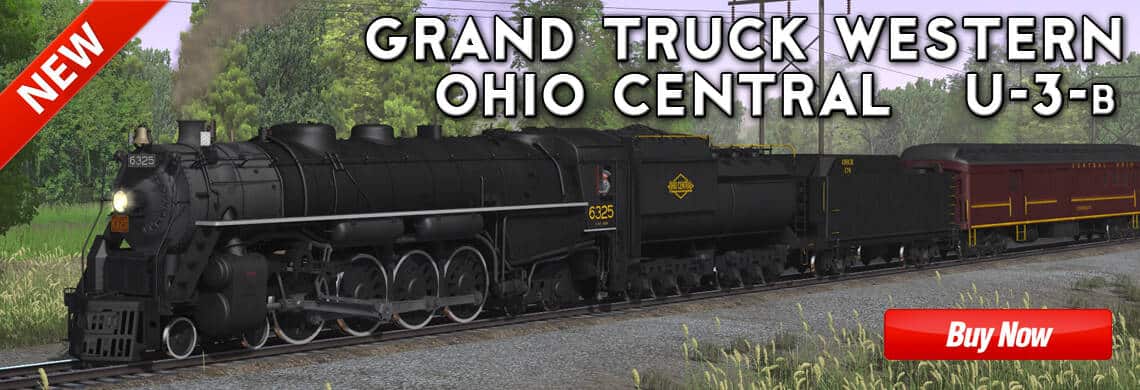
by Steve Lerro
K&L Trainz proudly welcomes the first GTW locomotive to the roster: the U-3-b 4-8-4 Confederation!
GTW/OHCR U3b Confederation set includes: (4) Locomotives, (2) Tenders, (1) Aux Tender, (1) Tool Car, (2) Baggage Cars and (7) Coaches
Buy now
by
The Grand Trunk Western’s flagship all purpose locomotives were the U-3-b, 4-8-4 Confederations. A total of 25 were built in 1942, numbered 6312-6336. They were the ideal locomotives on crack passenger trains exceeding 90mph, as well as 80 car hotshot freight trains exceeding 70mph. A (4) wheel trailing truck, (8) 73″ drivers, Walschaerts valve gear, and a 250psi boiler pressure made these extremely favorable locomotives with their crews. They were equipped with roller bearings on all but the driver axles, Boxpok drivers, Nicholson thermic syphons, and an Elesco exhaust steam injector. The U3b’s were known to run 250,000 miles between heavy repairs, and were used by the Grand Trunk until the very end of steam.
Of the (25) U3b’s built for the Grand Trunk Western in 1942, only (2) survive today:
#6323 is on display at the Illinois Railroad Museum in Union, IL. #6323 holds the distinction of being the last steam locomotive to be used in mainline passenger service in the United States. She made her final run under GTW ownership on September 20, 1961.
#6325 is on display at the Age of Steam Roundhouse in Sugarcreek, OH. #6325 was tasked with handling President Harry Truman’s campaign train across Michigan on GTW rails in 1948. She was retired in 1959, and because of her historical significance, she was spared the scrapper’s torch, and was donated to the city of Battle Creek Michigan. In 1985, an effort was made to restore the locomotive, but by 1992, GTW/CN required the locomotive be moved, in stepped Jerry Joe Jacobson. Jerry purchased the 6325 in 1993 and had the locomotive and tender moved the Ohio Central steam shops in Morgan Run, OH. There, Jerry’s crew restored the locomotive to operating condition, and she made her first test run in 2001, and she operated until the end of 2004. Jerry sold his interest in the Ohio Central Railroad, and moved his collection of vintage locomotives and rolling stock to the new Age of Steam Roundhouse constructed in 2011.
Jerry Joe Jacobson passed away on September 13, 2017. This model and promo video are dedicated to his efforts in keeping steam alive!
GTW/OHCR U3b Confederation set includes: (4) Locomotives, (2) Tenders, (1) Aux Tender, (1) Tool Car, (2) Baggage Cars and (7) Coaches
